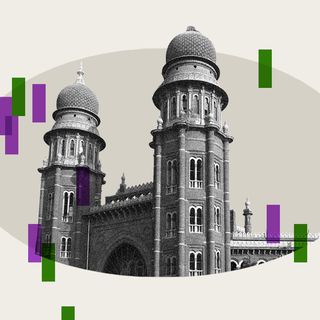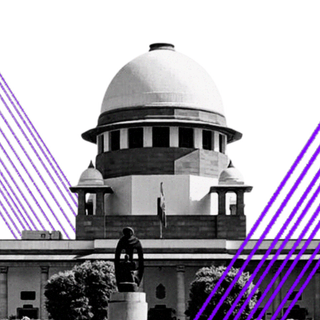
Set Up Common Burial Grounds Without Caste Segregation: Madras HC to Govt
SC communities face violence for carrying bodies “across certain lands belonging to the people of the so-called higher castes,” the court said.

The Madras High Court recently lamented rampant caste-based discrimination that people from Scheduled Caste (SC) communitiesface even in death. The court directed the Tamil Nadu government to construct common burial/cremation grounds in villages for people from all castes.
The court was responding to a plea seeking a separate burial ground for the Arunthathiyar community in Tamil Nadu’s Madur village. The complainants said they presently bury their dead on the banks of a waterbody. The bench, comprising Justice R. Mahadevan, denied the plea for establishing a caste-based cremation/burial grounds. Instead, he urged the local body and state officials to convert all caste-based cremation/burial grounds into common facilities accessible to all people of the same faith.
“Every citizen should be entitled to use the common burial/cremation ground with all connected facilities and amenities attached thereto, without being discriminated or segregated,” Justice R. Mahadevan said, noting it is mandated under Article 25, guaranteeingthe right to freedom ofreligion.
“The law emerges clearly that the right to bury the dead body in accordance with one’s religious rites and customs is a part of the fundamental right to religion under Article 25 of the Constitution. The use of public land or public facilities cannot be subject to discrimination on the ground of religion, race, caste, sex or place of birth.”
There remains a long history of caste-based violence against people for accessing village crematoriums and burial grounds. In 2017, a Dalit family was forced to cremate a body outside the tehsildar’s office in Maharashtra’s Parbhani district after facing restrictions from caste Hindus in the village. A similar instance played out in Solapur this year. In 2019, the body of a Dalit man was lowered from a bridge because the route to the old burial ground passed through the agricultural lands of upper caste locals, who denied entry to the procession.
Related on The Swaddle:
Oppressor‑Caste Solidarity Drives Culture of Silence Around Rapes of Dalit Girls in Haryana: Report
These remain the few reported instances that catch media attention. “In other states, Dalits sometimes have to keep their deceased relatives for several days until they can resolve where to bury or cremate them,” Lalit Babar, general secretary of the National Federation of Dalit Land Rights, told Reuters.
The court, lamenting how caste discrimination continues unabated even after death, noted how “right from the beginning of the introduction of the caste system, the social interaction between different castes and classes of society have always been in such a way that the different castes in the hierarchy of system do not interact with each other from birth to death.”
Most people from SC communities don’t have access to land. “It is indeed an undeniable fact that there have been several instances where Dalits, Arundathiyars, and several others perceived to be members of the lowest in the hierarchy of the caste system, do not have lands where they can cremate or bury the dead bodies of their community people…” the court noted.
While some Dalit families make use of patches of their own land for cremation, landless families face serious problems while accessing the burial site in villages. According to the recent data, 71% of Dalits are landless laborers who work on land they do not own. In rural areas, 58.4% Dalit households do not own land at all. This varies for people from different communities in different regions, but landlessness is a refrain that binds all.
Moreover, “in rural areas where caste biases are most entrenched, Dalits have lost their burial ground to village elites,” Babar said.
Related on The Swaddle:
By Stifling Marginalized Voices, Social Media Mimics Real Life Casteism
Without land of their own, people are forced to cremate their dead along riverbanks or on public land. In the present case, the complainants noted the 30 Arunthathiyar that live in the village have been cremating dead bodies in the two adjacent odai puramboke (or common “waste” land) for three decades. This is not sustainable as it disrupts other people’s access to the land and raises the threat of floods during the rainy season. This led them to seek a separate permanent ground that could be accessed without loss of dignity.
“We do not have land for housing or for livelihoods. Now, we are being denied land for dying,” Babar said.
There are still “worse” cases, the court said, “where they could not even carry the dead bodies across certain lands belonging to the people of the so-called higher castes.” Reports show crematoriums are often made available closer to the privileged caste people’s houses, making access for SC communities difficult.
Moreover,“desecration of a dead body, disallowing usage of grazing land to carry out the rituals, and violent attacks on marginalized communities are commonly reported from rural Maharashtra,” Sukanya Shantha noted in The Wire. In other cases, on a complaint, the Tamil Nadu government officials said there was no discrimination against Dalits after the video of the man being lowered made rounds.
In the present case, the court suggested some measures that local bodies and state governments can actively adopt to address caste segregation. These include removing separate boards in cremation grounds that restrict entry; taking remedial measures to eradicate social fissures that continue dividing people; sensitization programs for proper implementation, and imposing penal violations for those who violate the orders.
The judge also suggested including values of religious and communal tolerance and mutual respect for different communities and cultures in the school curriculum.
Richard Devadoss, a convener for the South India Coalition for Land Rights, explained the powerlessness that cuts at the heart of the issue: “Without land, they have no power, no dignity, even in death.”
Saumya Kalia is an Associate Editor at The Swaddle. Her journalism and writing explore issues of social justice, digital sub-cultures, media ecosystem, literature, and memory as they cut across socio-cultural periods. You can reach her at @Saumya_Kalia.
Related


People With Disabilities Shouldn’t Be Asked To Remove Prosthetic Limbs at Airport Security: SC
